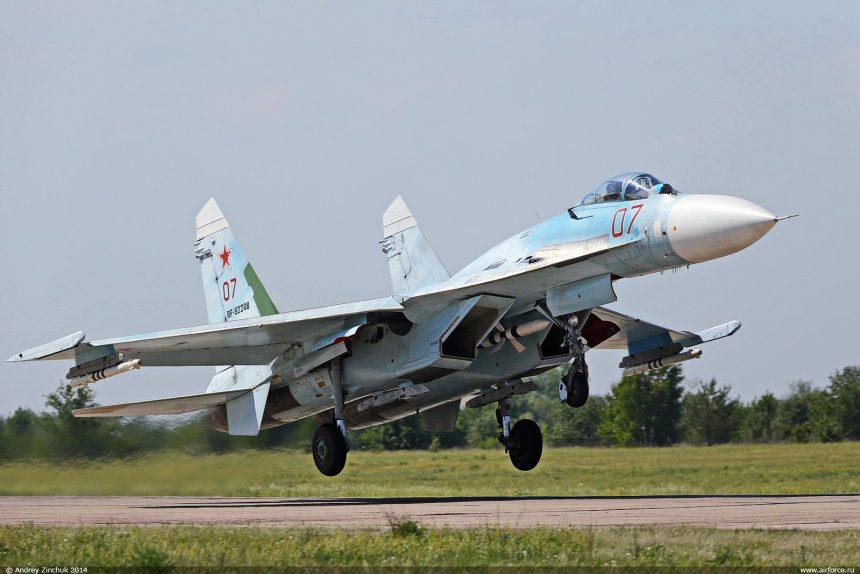It looks like a Su-27 Flanker performed a reckless intercept on a U.S. RC-135U over the Baltic Sea.
On Apr. 7, a U.S. RC-135U flying in international airspace was intercepted over the Baltic Sea, off Kaliningrad Oblast, by a Russian Su-27 Flanker fighter jet.
According to the Pentagon, the Russian plane buzzed the American spyplane and then performed two close high speed passes: a “reckless” and “unprofessional” behaviour according to U.S. officials.
Needless to say, the Russians deny the American report of the two planes near colliding during the intercept.
Russia’s Defense Ministry spokesman Maj. Gen. Igor Konashenkov said the RC-135U was intercepted after the Russian radars detected an unidentified airborne target over the Baltic, flying with its transponder switched off, towards the Russian border.
According to the Russian MoD, no emergency situation was registered during the close encounter and the intercept mission went as routine.
The Su-27 reached its target, flew around it several times, identified it as an RC-135U and reported its tail number to the ground control: more or less the same procedure NATO or U.S. planes follow when the intercept and shadow Russian spyplanes in northern Europe.
However, unless very slow-moving aircraft are intercepted, fighter jets usually don’t need to fly around the aerial target “several times”: they approach the target from astern and slowly get closer until the pilots can visually read the serials, registration etc.
Multiple passes are usually flown when interceptors can’t fly as slow as their targets and perform several passes to identify the aircraft and get all the details they need to transmit to the ground radar.
This is not the first time Russian pilots are accused to perform unsafe intercept missions on NATO or US planes: last year a Russian Su-27 Flanker performed a dangerous intercept putting itself within 10 meters of Swedish ELINT plane. Earlier a U.S. RC-135U spyplane and Russian Su-27 were involved in one of the most dangerous aerial encounters since the Cold War in the skies north of Japan.
The RC-135U is one of the most secretive U.S. surveillance planes: deployed at RAF Mildenhall, in the UK, it provides strategic electronic reconnaissance information, performing signal analysis by means of a wide variety of commercial off-the-shelf and proprietary hardware and software, including the Automatic Electronic Emitter Locating System. It’s pretty clear why the Russian are unhappy when one of these planes flies in the vicinity of their bases.
One more detail worth a note is the fact that the Russians say the U.S. plane was flying with its transponder switched off: Russian spyplanes, that regularly fly with no transponder near Sweden have raised concern among Swedish authorities.
Aircraft flying without transponder in international airspace close to airliners routes and airports are not visible to the civilian air traffic control radars therefore they can pose a threat to civil planes unaware of their presence.
Still, the Mode-S transponder could be detected by ADS-B receivers according to Flightradar24.com (although it’s unclear whether the aircraft kept the transponder switched on during the whole mission, including the part of its flight when it was intercepted).
@RT_com The US aircraft had transponder ON. Transponder code: AE01D5 Registration: 64-14849 Callsign: TELEX97
— Flightradar24 (@flightradar24) 11 Aprile 2015
Image credit: Andrey Zinchuk / Airforce.ru
H/T to Lasse Holmstrom and Erik Arnberg for providing more details about this story.















